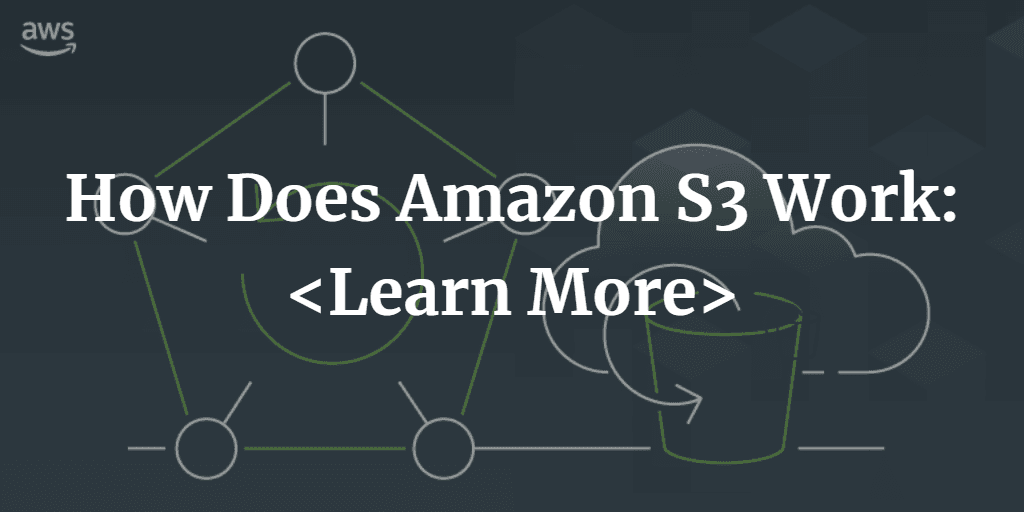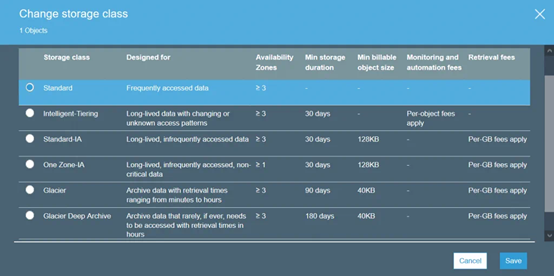Discover how Amazon S3 works, offering scalable cloud storage solutions with robust security, reliability, and flexibility.

Amazon S3 is a scalable, high-speed, web-based cloud storage service designed for online backup and archiving of data and applications. Launched by Amazon Web Services (AWS), S3 provides a simple web interface through which users can store and retrieve any amount of data at any time, from anywhere on the web. Its design allows for scaling storage resources up or down as needed, making it highly flexible for various use cases.
At the core of Amazon S3 are "buckets." A bucket is a container for storing objects (files) in S3. Each bucket is identified by a unique key within a specified region. Users can create multiple buckets within their AWS account, organizing data in a way that makes sense for their specific requirements. Buckets can also be configured with various settings, including permissions and policies, to control access and manage data efficiently.

Amazon S3 works for multiple user cases including:
Amazon S3 uses an object storage architecture+, where data is stored as objects within buckets. Each object consists of the data itself, a variable amount of metadata, and a unique identifier (key). This structure enables the storage of a diverse range of data types, from simple text files to complex binary data. Object storage is particularly advantageous for unstructured data, such as multimedia
Amazon S3 offers several storage classes designed to cater to different access needs and cost considerations. These include:

Understanding the pricing model of Amazon S3 is crucial for cost management. Pricing components include:
AOMEI Cyber Backup is a comprehensive backup solution designed to protect critical data across various environments, including physical and virtual infrastructures. It aims to simplify the backup process, ensuring data integrity and availability without requiring extensive technical expertise.
You can easily archive important data to Amazon S3 - a highly durable and scalable cloud storage service.
Why you choose AOMEI Cyber Backup? 🔰 Versatile Backup Options: Supports full, incremental, and differential backups, catering to different data protection needs. 🔰 Automated Scheduling: Allows users to set up automated backup schedules, ensuring regular data protection without manual intervention. 🔰 Comprehensive Data Protection: Covers various environments, including Windows PCs, servers, virtual machines, and SQL databases. 🔰 Easy Restoration: Provides straightforward data restoration options, allowing for quick recovery in case of data loss or corruption. 🔰 User-Friendly Interface: Designed with simplicity in mind, making it accessible for users with varying levels of technical knowledge.
📢 How to auto backup Windows to Amazon S3 from a central console:
1. Click Target Storage > Amazon S3 > Add Target to open the add target page. Enter your Amazon S3 credentials including username, keyword, and bucket name, then click Confirm. Ensure you have the necessary permissions set up in your AWS account.
2. Click Backup Task > Create New Task to starting archiving your important data to Amazon S3. Select File Backup (for example) and choose files or folders for backup.
3. Check Archiving backup versions to Amazon S3 and click Select to choose the added Amazon S3.
4. Schedule backup task to run daily/weekly/monthly, and select backup retention policies to delete old backups automatically.
5. Click "Start Backup" to begin the backup process. It will first create a backup locally or on the NAS and then upload the backup to Amazon S3.
Q: Can I restore my data from Amazon S3 using AOMEI Cyber Backup?
A: Yes, AOMEI Cyber Backup provides easy data restoration options, allowing you to quickly recover your data from Amazon S3 in case of data loss or corruption.
Q: What are S3 Universal Storage Buckets?
A: Storage buckets are containers for objects stored in Amazon S3, and you can store any number of objects in a bucket. A Universal Bucket is the original S3 bucket type, and a single Universal Bucket can contain objects across all storage classes (except S3 Express One Zone). This bucket is recommended for most application scenarios and access patterns.
Q: What is the difference between a Universal Storage Bucket and a Catalog Storage Bucket?
A: Storage buckets are containers for objects stored in Amazon S3, and you can store any number of objects in a bucket. A Universal Bucket is the original S3 bucket type, and a single Universal Bucket can contain objects across all storage classes (except S3 Express One Zone). This bucket is recommended for most application scenarios and access patterns. the S3 Catalog bucket only allows objects to be stored in the S3 Express One Zone storage class, which allows for faster data processing within a single availability zone. This bucket is recommended for low-latency scenarios. Each S3 catalog storage bucket can support hundreds of thousands of transactions per second (TPS), independent of the number of catalogs in the bucket.
Amazon S3 stands as a versatile and robust cloud storage solution, offering unmatched scalability, durability, and flexibility. By understanding its features and best practices, users can harness the full potential of Amazon S3 to meet their storage needs efficiently and securely. Whether you're backing up critical data, distributing content globally, or diving into big data analytics, Amazon S3 provides the tools and infrastructure necessary to succeed in the digital landscape.